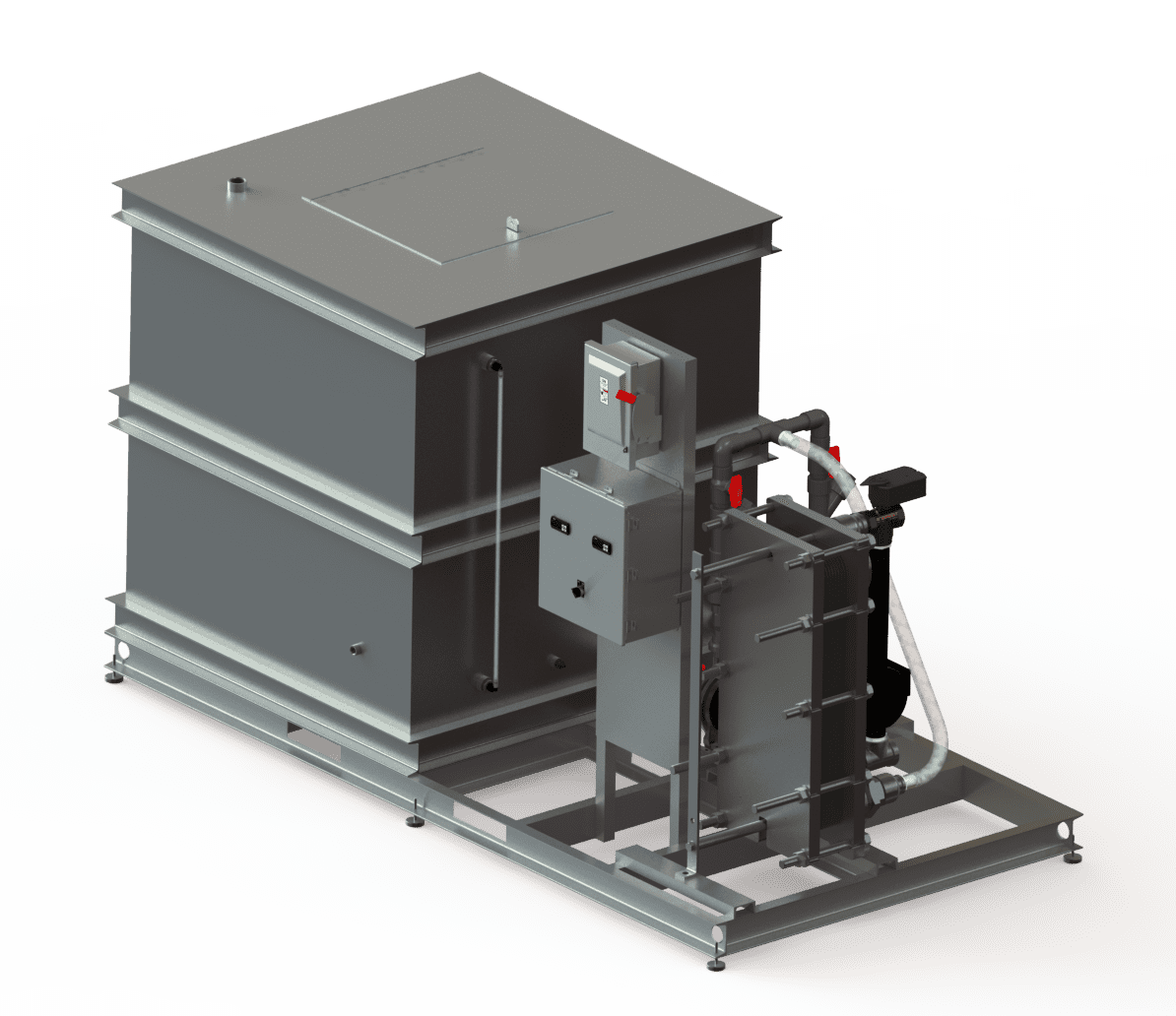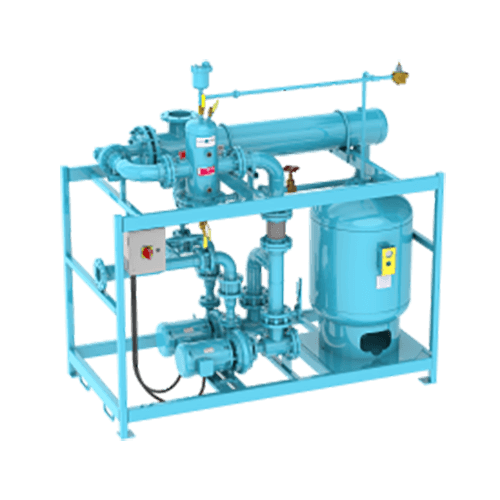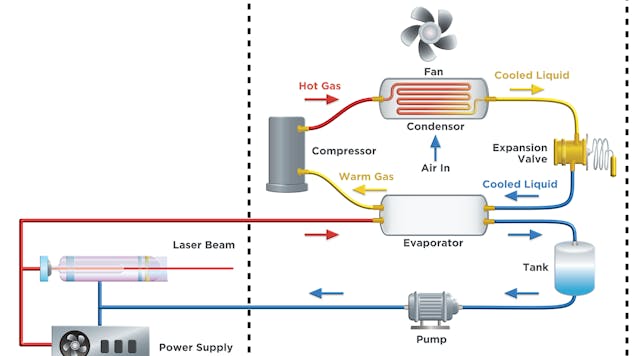Unlocking the Potential of DVS Heat Transfer Systems in Next-Gen Thermal Management
A Comprehensive Overview to Choosing the Right Heat Transfer Equipments for Your Needs
Selecting the ideal Heat transfer system is important for operational effectiveness. Numerous systems cater to various demands, affected by variables such as temperature level range and fluid type. Recognizing the principles behind Heat transfer, such as radiation, convection, and conduction, is essential. Additionally, examining power sources and upkeep methods can affect long-term efficiency. A closer examination of these considerations exposes exactly how to tailor a system to particular demands. What should one prioritize in this complex decision-making procedure?
Comprehending Heat Transfer: Trick Concepts and Concepts
Although Heat transfer may feel like a simple principle, it incorporates a variety of concepts that are essential for effective system design. Comprehending these concepts is essential for engineers and developers that intend to optimize thermal efficiency in various applications. Conduction, as an example, entails the transfer of Heat with strong materials, while convection refers to the movement of Heat within fluids. Radiation, another essential principle, defines exactly how Heat can be moved through electro-magnetic waves. Each of these mechanisms plays an important role in determining just how energy moves within a system. By extensively realizing these concepts, professionals can make enlightened choices, ensuring that Heat transfer systems operate successfully and fulfill the particular needs of their applications
Types of Heat Transfer Solutions: A Review
Recognizing the concepts of Heat transfer lays the groundwork for checking out the numerous sorts of Heat transfer systems readily available. Heat transfer systems can be classified mostly into three kinds: transmission, radiation, and convection. Conduction involves Heat transfer via solid products, relying upon straight call in between particles. Convection, on the various other hand, occurs in fluids (gases and fluids) where the activity of the liquid itself facilitates Heat transfer. Radiation includes the transfer of Heat with electro-magnetic waves and does not need a tool, allowing it to happen in a vacuum cleaner. Each kind of system has distinct characteristics and applications, making it important for individuals and companies to meticulously examine their specific demands when selecting one of the most appropriate Heat transfer solution.
Applications of Heat Transfer Systems in Numerous Industries
Heat transfer systems play a vital role across different markets, influencing efficiency and product top quality. In industrial manufacturing processes, they help with precise temperature level control, while in food and beverage processing, they assure safety and security and conservation. Furthermore, heating and cooling and environment control systems depend greatly on reliable Heat transfer to preserve comfortable atmospheres.
Industrial Production Processes

Many industrial manufacturing procedures rely greatly on efficient Heat transfer systems to make best use of efficiency and boost product high quality. In industries such as metalworking, Heat exchangers play a vital function in keeping optimal temperature levels throughout welding, casting, and building. These systems ensure consistent Heat distribution, which is essential for achieving wanted material properties. Likewise, in the chemical production market, Heat transfer systems promote accurate temperature level control during responses, influencing return and safety and security. Furthermore, in fabric manufacturing, effective Heat monitoring is very important for dyeing and finishing processes, influencing shade uniformity and fabric top quality. By selecting suitable Heat transfer technologies, suppliers can improve energy effectiveness and minimize functional prices, ultimately causing an extra sustainable and competitive manufacturing environment.
Food and Drink Processing
Efficient Heat transfer systems are similarly crucial in the food and drink handling market, where keeping optimal temperature levels is vital for food safety and quality. These systems play a necessary role in processes such as sanitation, cooking, and pasteurization, making certain that products are safe for intake and retain their dietary worth. Heat exchangers, as an example, effectively transfer Heat in between fluids, enhancing energy usage while decreasing temperature level changes. Furthermore, refrigeration systems are essential for maintaining perishable things and prolonging service life. The choice of Heat transfer technology straight influences operational effectiveness and item integrity, making it important for food and drink makers to pick the suitable systems customized to their specific processing requirements. This mindful option ultimately adds to customer satisfaction and food security.

Cooling And Heating and Climate Control
While many markets count on Heat transfer systems for effectiveness, HVAC (Heating, Air Flow, and Air Conditioning) plays an important duty in maintaining indoor environment control throughout different setups. These systems use Heat transfer concepts to regulate temperature, moisture, and air high quality, making sure comfort and security in household, commercial, and commercial environments. Effectively developed HVAC systems enhance power efficiency, lower operational expenses, and decrease ecological impact. In commercial structures, for example, efficient climate control adds to employee performance and customer fulfillment. In industrial applications, a/c systems assist keep excellent conditions for equipment procedure and item preservation. Choosing the ideal Heat transfer system is essential for conference specific environment control needs and accomplishing overall system performance.
Examining Power Sources for Heat Transfer Solutions
In examining power sources for Heat transfer systems, a contrast of renewable resource alternatives and nonrenewable fuel source factors to consider is crucial. Eco-friendly sources, such as solar and wind, hop over to here offer lasting choices that can minimize environmental impact. Alternatively, nonrenewable fuel sources remain widespread due to their well-known framework and energy density, triggering a mindful evaluation of both options.
Renewable Resource Options

Nonrenewable Fuel Source Considerations
Reviewing fossil fuel considerations is necessary for the effectiveness and sustainability of Heat transfer systems. Nonrenewable fuel sources, such as natural gas, oil, and coal, are typical energy sources that supply substantial Heat output, making them prominent choices for property and commercial applications. Their environmental influence, consisting of greenhouse gas exhausts and resource deficiency, raises concerns. When picking a warm transfer system, it is vital to assess the schedule, cost, and regulatory aspects connected with these gas. Furthermore, the performance of fossil gas systems need to be thought about, as higher effectiveness can mitigate some ecological drawbacks. Inevitably, a well balanced method considering efficiency and sustainability can guide decision-makers towards the most proper Heat transfer service for their certain demands.
Factors to Take Into Consideration When Selecting a Warmth Transfer System
Choosing a proper Heat transfer system needs cautious factor to consider of different factors that can considerably affect effectiveness and performance. One crucial aspect is the operating temperature level array, which determines the products and layout suitable for the application. Furthermore, the kind of liquid made use of in the system-- whether gas or fluid-- impacts Heat transfer efficiency and compatibility. The system's dimension and ability have to straighten with the specific needs of the operation to prevent inefficiencies. Energy resource accessibility is also necessary, affecting operating costs and sustainability. In addition, the installment atmosphere, including space restrictions and availability for maintenance, plays a considerable duty in system choice. Finally, regulatory conformity and safety requirements need to be considered to assure the system meets all legal requirements.
Upkeep and Effectiveness Optimization for Heat Transfer Systems
Keeping Heat transfer systems is crucial for making certain maximum efficiency and longevity. Routine upkeep activities, such as cleansing Heat exchangers and inspecting insulation, assistance prevent effectiveness losses due to fouling and thermal connecting. Additionally, keeping track of system parameters, consisting of pressure and temperature level, permits early detection of anomalies, minimizing downtime and pricey repair work. Implementing a preventive maintenance schedule can optimize performance and extend the lifespan of components. In addition, upgrading to advanced control systems can enhance operational efficiency by adapting to differing conditions and tons. By focusing on upkeep and effectiveness optimization, operators can attain minimized power usage, lower operational costs, and boosted total system reliability, inevitably causing far better source usage and a much more lasting operation.
Future Patterns in Heat Transfer Technologies
As industries progressively focus on sustainability and power effectiveness, future trends in Heat transfer innovations are readied to undergo significant changes. Advancements such as advanced materials, including carbon nanotubes and nanofluids, assure enhanced thermal conductivity and efficiency. In addition, the combination of renewable resource resources right into Heat transfer systems is getting energy, advertising environment-friendly options. Smart innovations, consisting of IoT sensors, are anticipated to reinvent monitoring and control, enabling real-time information evaluation for optimized efficiency. Additionally, the advancement of compact and modular systems will certainly facilitate less complicated setup and maintenance, accommodating varied applications. These developments show a change in the direction of more lasting, effective, and versatile Heat transfer services, straightening with worldwide power goals and ecological requirements.
Frequently Asked Inquiries
What Are the Environmental Effects of Heat Transfer Equipments?
The environmental effects of Heat transfer systems can consist of greenhouse gas exhausts, energy intake, and potential thermal contamination. Furthermore, improper disposal of inadequacies and products can add to source deficiency and ecological community disturbance.
How Do I Compute the Cost-Effectiveness of a Warm Transfer System?
To compute the cost-effectiveness of a warm transfer system, one have to analyze preliminary expenses, operational costs, upkeep needs, and energy efficiency, comparing these elements against the anticipated life expectancy and efficiency of the system.
Can Heat Transfer Solution Be Made Use Of in Residential Settings?
Heat transfer systems check my blog can indeed be made use of in domestic settings. They supply efficient heating and cooling down options, making homes much more comfortable while potentially reducing power click here for more expenses. Their convenience allows for various applications in domestic atmospheres.
What Safety And Security Regulations Put On Heat Transfer Solutions?
Security guidelines for Heat transfer systems typically consist of standards on operation, maintenance, and installment. Compliance with regional structure codes, manufacturer specs, and sector criteria is crucial to assure effective and safe system efficiency in numerous applications.
Exactly How Do Different Products Affect Heat Transfer Efficiency?

Conduction, for instance, involves the transfer of Heat with strong materials, while convection refers to the activity of Heat within fluids. Comprehending the principles of Heat transfer lays the groundwork for exploring the various kinds of Heat transfer systems available. Heat exchangers, for instance, efficiently transfer Heat in between liquids, optimizing energy usage while decreasing temperature fluctuations. In reviewing power resources for Heat transfer systems, a contrast of renewable energy choices and fossil gas considerations is necessary. Metals, such as copper and light weight aluminum, conduct Heat effectively, whereas insulators like rubber and glass slow down Heat circulation.